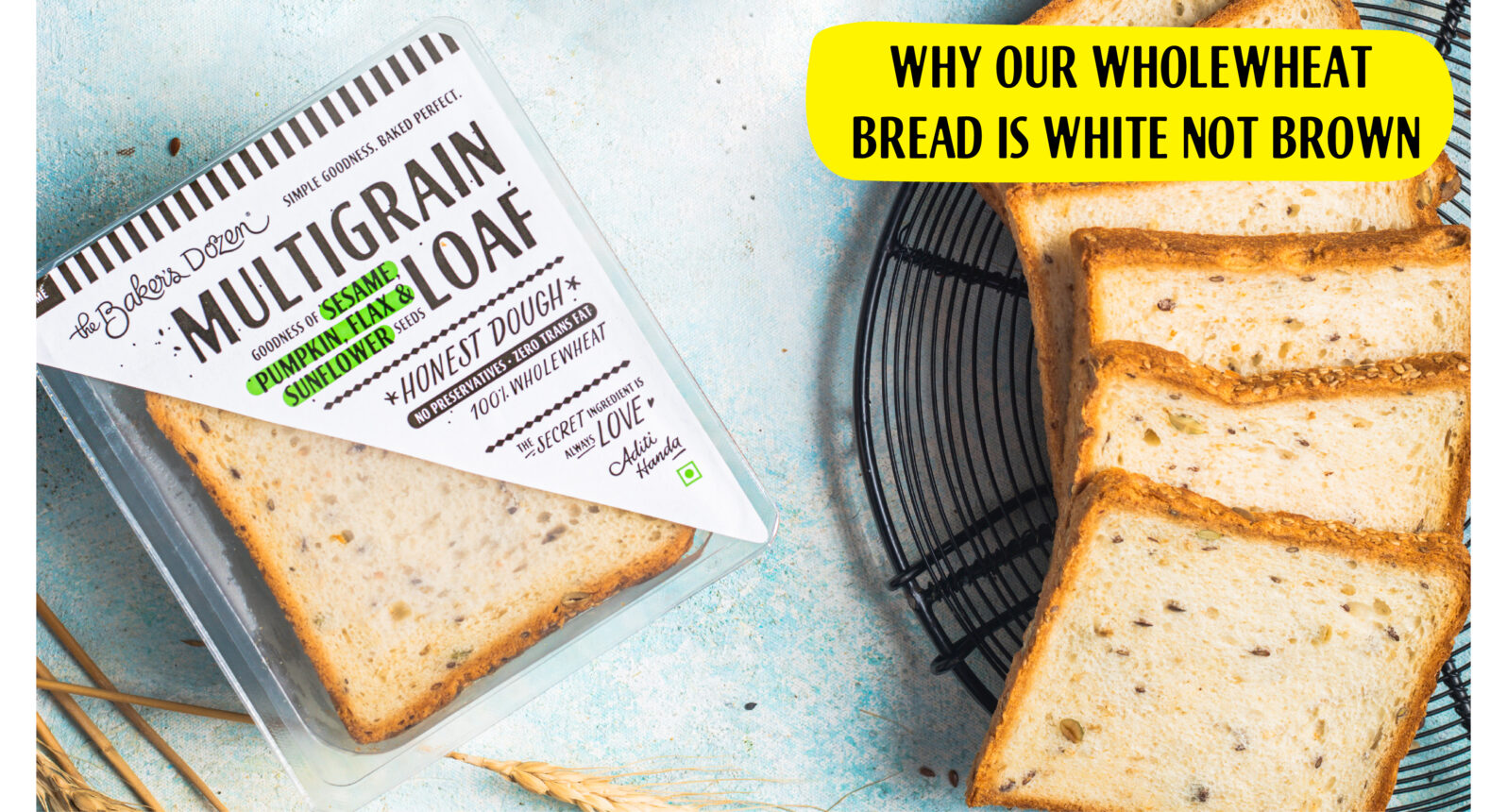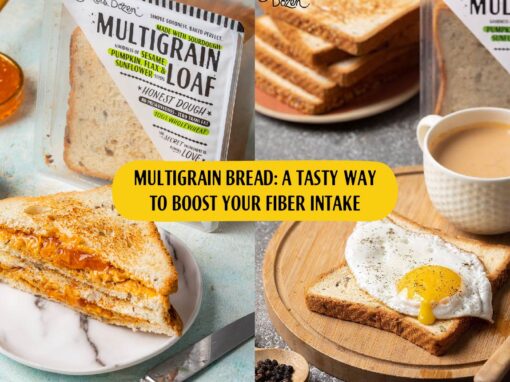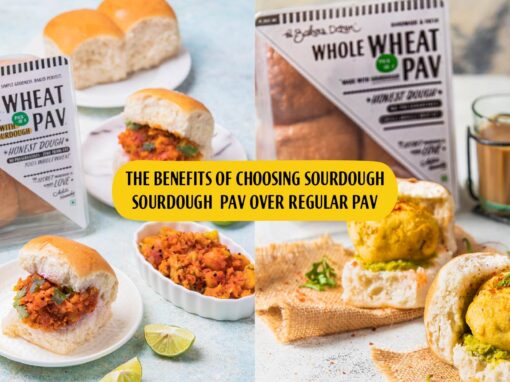Healthy or wholewheat bread is not always brown. Most people have a preconceived notion that wholewheat bread is supposed to be brown in colour. This couldn’t be farther from the truth and most of us see the proof ourselves every day at our homes. The flour used to make rotis or chapatis at home is wholewheat flour and as a matter of fact, the rotis are not brown in colour! When cooked to the optimal point, they are off-white or white with a few brown specks here and there due to the bran present in the wholewheat flour. Then why is wholewheat bread expected to be brown in colour?
Concept of ‘Brown Bread’
Wholewheat bread, and other products as well for that matter, are expected to be brown in colour. This is majorly because people often confuse wholewheat bread with brown bread. The introduction of brown bread in the market has led many individuals to believe that it is the same as whole wheat bread or that it is healthier than white bread because the marketing of brown bread is done in such a way. In order to clear the confusion between brown and whole wheat bread, we need to first understand the difference between the two.
Brown Bread v/s Wholewheat Bread
Whole wheat bread, popularly known and sold as “atta bread”, is made from whole wheat flour (atta) or a mixture of both whole wheat flour (atta) and refined wheat flour (maida). All wholewheat bread by The Baker’s Dozen is made purely from 100% atta without any maida. Hence, our whole wheat bread, as mentioned earlier, is white with a few brown specks and not completely brown.
Brown bread, on the other hand, may be made with either atta or maida. The characteristic brown colour in brown bread is generally due to added colours. The most commonly added colour is ‘INS 150a’, known as ‘caramel colour’. It gives a deep brown colour to bread upon addition. So there is no extra nutritional benefit of eating brown bread over regular “white” or maida bread. But atta bread is of course better than bread made with maida due to its higher fibre content and other health benefits.
So now that you know the difference between the two, the confusion regarding why our products are not ‘brown enough despite being made from wholewheat flour has to be gone.
Benefits of Wholewheat Bread
Since wholewheat bread is packed with the goodness of whole grains, the benefits are plenty. We have listed the most remarkable ones below.
- Due to high fibre content, it promotes a healthy digestive system.
- Consuming whole grains in one form or another reduces the risk of cardiovascular diseases.
- Due to a healthier heart, thanks to the whole grains, the risk of a stroke is also reduced.
- Though consuming bread is linked to putting on weight, wholewheat bread can give the opposite effect and helps in weight management.
- It doesn’t have the same calories as regular bread made of maida have.
- Since wholewheat bread is made of whole grain, it is packed with vitamins and trace elements (minerals).
- Brown bread keeps you fueled up for a longer period than maida bread would.
Is Brown Bread always unhealthy?
Brown bread is not always unhealthy or bad for health. If brown bread is made with whole wheat flour and the brown colour is a result of natural ingredients like caramel or molasses, then, it may be a healthy choice. Just be sure to read the ingredients on the label properly in order to make informed and better decisions that suit you and your lifestyle. Or you can just take the easy way out and go for our whole wheat bread which are 100% whole wheat and white, as a good whole wheat bread should be.
We have all our wholewheat bread listed below so that pick the one you fancy.
Authentic Sourdoughs:
- Fourgrain Sourdough
- Blueberry Cranberry Sourdough (Pain au Levain)
- Country Sourdough
- Chilli Cheese Sourdough
Artisan Bread:
- Bagel Sesame
- Baguette
- Ciabatta
- Garlic Bread
Honest Daily Bread:
- Focaccia
- Multigrain Loaf
- Wholewheat Loaf
- Ragi Loaf
- Burger Buns
- Pizza Base
- Pita Bread
- Wholewheat Pav
- Masala Pav





